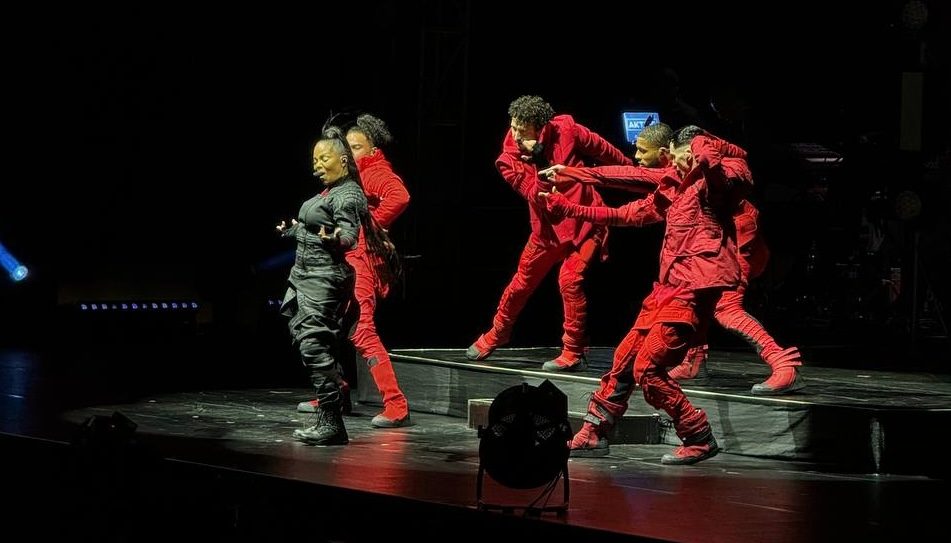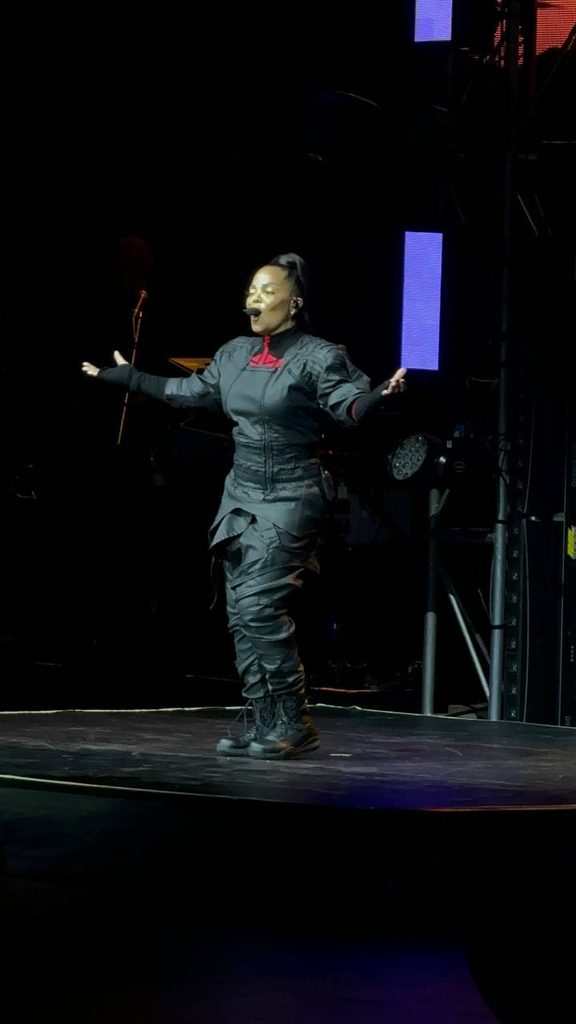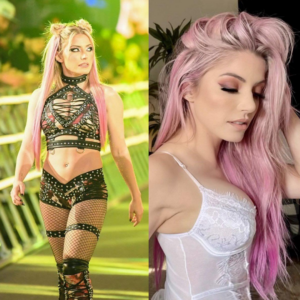
In an alternate reality, the pop icon’s one-night-only show at the Araneta Coliseum would have been sold out
MANILA, Philippines – “If ‘Nipplegate’ didn’t happen, this stadium would have been full,” I thought to myself as I waited for the lights to dim.
At 8:50 pm on Wednesday, March 13, 2024, Janet Jackson’s “Together Again” concert at the Araneta Coliseum in Quezon City still hadn’t started, though it seemed everything was already in place. The technical crew were at their consoles and monitors. I could hear the band warming up behind the curtain. Janet posted a photo on her social media hours earlier – she was already backstage.
The ticket said “8:00 pm” but, nearly an hour later, the seats were only starting to fill. Metro Manila traffic, obviously. Janet – Miss Jackson if you’re nasty – adjusted to Filipino time.
But it was apparent that not all seats would be taken. Ushers were upgrading gallery seats and scrunching the crowd closer to the stage. To me, a die-hard fan, it was saddening.
The Janet Jackson – pop culture icon, entertainment royalty, superstar of the highest order – was performing one show in Manila, and it wasn’t sold out. Coldplay and The Corrs each did two nights recently and the venues were filled to the rafters. Taylor Swift just did what I’d call a mini residency in Singapore and my younger brother went, ditching Janet.
She is, according to one of my Rappler colleagues, a “nostalgia act.” An artist past her prime. A has-been. At the office the day before the concert, I showed a couple of curious twenty-something researchers the music videos to “That’s the Way Love Goes,” which featured pre-fame Jennifer Lopez dancing in the background, and “All For You,” which featured Janet’s abs flexing front and center. One of them said, “Oh! She’s just like K-pop.”
In my head: “Excuse you, young one. K-pop was built on the rock of Janet Jackson.” I told her this in more compassionate terms.
‘It Girl’
Since the 1990s, the debate among music fans was whether Janet Jackson, not Madonna, should be called the Queen of Pop. At the start of the next decade, in March 2001, MTV named Janet its first-ever MTV Icon. In the top-rated telecast, the younger superstars of the day – Britney Spears, Christina Aguilera, Jessica Simpson, Usher, Pink, N’Sync (including Justin Timberlake), and Destiny’s Child (including Beyoncé) among them – hailed Janet, not even 35 at the time, as the pioneer of hip-hop-influenced song-and-dance in pop music. She was their blueprint.
She was the “it girl” of the late ’80s, the ’90s, and the early aughts. She embodied the day’s definition of cool. She grooved, she cooed, she sang about sex, she had her husband hold her naked breasts for a Rolling Stone cover. Her shows were full-on theatrical productions. Her albums spoke to the zeitgeist. Her hit songs formed the bases (a practice called “sampling”) of other hit songs.
Sure, she was a nepo baby – Michael Jackson and the rest of the Jackson Five are her older brothers – but her success, by certain indicators, outdid theirs. In 2018, Billboard ranked her a notch above Michael (she was no. 7, he was no. 8) on its list of top-performing artists in the history of its Hot 100 chart. She’s her own star, no question.
So why did Janet Jackson get lost in the pile of superstars? Why does she need reintroduction to the new generation of music fans, when many of her contemporaries remain household names?
The answer: ‘Nipplegate’ – that SuperBowl halftime show in 2004 in which Justin Timberlake was, according to both artists, supposed to rip off only a part of Janet’s bustier but ended up exposing her breast. They both apologized for the incident and denied it was intentional, but Janet – not Justin, just Janet – was severely chastised by the US public. TV and radio stations blacklisted her, award shows dropped her from their rosters, TV hosts constantly harangued her over it, even joked about it to her face. She lost a lot of corporate backing, and her career tanked.
For a long time, when anyone talked about Janet in public, it was almost always about her exposed breast. The incident minted the term “wardrobe malfunction”. It triggered the creation of YouTube.
From a perverse angle, we can say the magnitude of the scandal spoke of the magnitude of her celebrity. The height from which Janet fell was stratospheric.
Maybe Beyoncé’s chops were just better. Maybe Jennifer Lopez was better at marketing herself. Maybe Mariah Carey’s songs were more memorable. But in any case, Janet’s career lost its momentum after ‘Nipplegate’ and by the 2010s, she had begun to fade into the background.

Janet Jackson performed some 40 songs at the Araneta Coliseum on March 13. Photo by Elliza Dawn Aurelio
Cool crowd
And so, in 2024, a full 20 years after the scandal, Janet Jackson couldn’t sell out Araneta Coliseum. But the turnout was decent. When the show started at around 9 pm, there already was a solid crowd, I’d say about four-fifths of capacity.
And it was the Janet crowd – party-going types who dug her music even when it was, at times, risqué. They were on their feet by the third song (“Feedback”), and no one threw water bottles from behind to complain they couldn’t see (as happens in concerts where the audience prefers to stay seated).
With their energy, Janet’s Filipino fans more than compensated for the empty seats. In that pulsating darkness, it felt like a full house. Onstage, Janet and her four dancers – towering, muscular males who moved as one – kept a tight grip on the audience. The quintet didn’t look and feel like the small cast that they were. The staging, blocking, choreography, and lighting made them appear larger than life.
Forty songs in one hour and 50 minutes felt like an exhilarating MTV blitz. The show was seamless.
The setlist spanned her music career’s four decades, touching in full or in part all of her hits except “Doesn’t Really Matter” – conspicuously absent from the Hawaii and Manila setlists (she performed it on the tour’s Mainland US leg). Otherwise, she evenly covered her catalog, from the funky “What Have You Done For Me Lately?” from her 1986 breakout album “Control”, to the sultry “No Sleeep” (yes, three e’s) from 2015’s “Unbreakable”, her latest full-length release.
Some songs got more time than others. “All For You,” particularly popular among Filipino fans, was mashed up with “Come on Get Up.” She also only sang half of “Escapade”, and of the ballads “Come Back to Me” and “Let’s Wait Awhile”. But she sang crowd favorites “That’s the Way Love Goes” and “Love Would Never Do (Without You)” entirely. She performed three versions of “Together Again”.
You’d regret her not singing some songs in full, until you realize the show would take all night if she did. She has so many hits.
The crowd went extra wild when the music video to “Scream” came on, with big bro Michael opening the song. Janet saunters in on her verse and sings with a rasp that matches Michael’s growls. It’s Jackson-and-Jackson – likely the most epic sibling duet in music history.
Excellent form
But it wouldn’t be Manila without the audience stealing the show with their singing. Janet usually lets the crowd sing most of her 1993 ballad “Again”, but she takes over at the climax for the sustained high note on the word “again”. But this is the Philippines. The audience sounded like it could keep going even as the song neared that high note, and Janet felt it. She kept holding her mic out to the crowd, and the crowd obliged: “Don’t you stand there and then tell me you love me then leave again…”
Janet was visibly moved. It looked like she wiped a tear. “You sound so beautiful. I love you so much,” she said at the end of the song.
Not that there was any doubt about her pipes. Critics and even fans have long accused her of undersinging and downright lip syncing to service her dancing. Take what I’m about to say with a grain of salt because I’m a fan, but then I also spent seven years as a professional musical theater artist. That is to say, I can tell when someone is lip syncing, and of all the Janet performances I’ve watched online or on DVD, only a very few were lipped, usually the penultimate song of a concert or numbers with really intricate choreography. Most of the time, she nails the song despite the strenuous dancing, and it’s just hard to believe she sang live.
She was 100 percent live on this show, at least as far as I could tell. You hear it in the plosives, in the inhalations and exhalations often edited out of recordings, the alternate notes here and there, the timbre that projecting to a microphone elicits, the nuances that fall short of digital perfection.

Am I a Janet apologist? Maybe. But she sounded great here – her tone was fuller and brighter than in her albums, which typically happens during live performances in large venues.
That’s also likely partly because of the milder dancing. The choreography to some songs were scaled down. I’d say generally she was giving 90 percent of the energy we used to see in her performances. It freed her body to better support her singing. She belted out pretty high runs on “If” like they were nothing. She hit higher notes on “Love Would Never Do (Without You)” than were on the album track.
At age 57, Janet Jackson is in excellent form. That she delivered an absolute tour-de-force in Manila after having done three successive shows in Hawaii is remarkable, but then you remember, this is Janet Jackson we’re talking about.
In another reality
A lot has happened since “Nipplegate”. When it was announced that Justin Timberlake was doing the SuperBowl halftime show in 2017, #JusticeforJanet trended worldwide. Documentary films looked back to analyze and reflect on the incident. People asked why only Janet, a black woman, was punished for it. Justin, a white man, even saw his career take off after and despite the scandal. It triggered discussions about public perceptions of women’s bodies, the inequality and injustices they face; how even Janet Jackson, at the height of fame and success, wasn’t spared.
The times have changed, and the industry has tried to make it up to Janet: she received the Billboard Icon Award in 2018, and was inducted into the Rock and Roll Hall of Fame in 2019. The first leg of the “Together Again” tour grossed $50.9 million – her career’s best. That’s not counting this next leg that includes Hawaii, the Philippines – the only Southeast Asian stop – and Japan, where she’s also set to do three shows. She has further stops all over the US slated until July.
But none of these will bring about the alternate reality of how Janet’s career would have been sans “Nipplegate”, or if the world had been chill about it. If she hadn’t been disadvantaged by the scandal, could she have remained as big as she was in the ‘90s and early aughts? Would more people have appreciated her? Would more young Filipinos be thrilled when she’s in town?
We will never know. Fact is, we are in a world where many people don’t know that Janet Jackson is the matriarch of the musical genre that spawned K-pop, P-pop, J-pop, and other expressions of hip-hop-influenced culture across the world today. That she and her brother invented the athletic, ultra-choreographed song-and-dance act we see in concerts and music videos everywhere.
And that they also set the standard. Still very few do it as well as Michael did and as Janet does.
In a 2010 Essence magazine article, writer Joan Morgan said of Janet’s legacy: “Jackson’s ‘Control,’ ‘Rhythm Nation 1814’ and ‘janet.’ established the singer-dancer imprimatur standard in pop culture we now take for granted. So when you’re thinking of asking Miss Jackson, ‘What have you done for me lately?’ remember that Britney, Ciara and Beyoncé live in the house that Janet built.”
I think this inarguably applies to the current crop of pop music superstars. A viewing of Janet’s March 13 show at the Araneta Coliseum will clear any doubts. – Rappler.com
News
Watch as UFC and WWE legend Ronda Rousey is reduced to tears during hot wings challenge
RONDA ROUSEY left many opponents in tears during her UFC career – but she was left in floods herself by a spicy chicken wing. The 33-year-old appeared on YouTube channel ‘First We Feast’, to talk about her life and career. Ronda…
WWE boss Vince McMahon ‘hoping to have’ both UFC legend Ronda Rousey and Becky Lynch back and fighting at WrestleMania
VINCE MCMAHON is reportedly hoping to have Ronda Rousey and Becky Lynch fighting each other at WrestleMania. The billionaire WWE owner has faced a difficult time with his wrestling company amid the chaos caused by the coronavirus outbreak. Becky Lynch…
“It’s gonna be war” – 42-year-old former champion issues grave warning to Ronda Rousey on WWE show
WWE star Ronda Rousey recently lost her Women’s Tag Team Championship after her long-time friend, Shayna Baszler, betrayed her. Amid their heated feud, Baszler has sent a stern warning to Rousey. The two stars had a fallout when Baszler shockingly turned…
Alexa Bliss, Chelsea Green and many others send love to former WWE Superstar following heartbreaking real-life update
Alexa Bliss (left); Chelsea Green (right) Alexa Bliss and Chelsea Green were among those who sent their love and condolences to Westin Blake (Wesley Blake) after the former WWE Superstar revealed that his dog recently passed away. Blake was with…
WWE Superstar Alexa Bliss reacts to her husband Ryan Cabrera’s cheesy post
Alexa Bliss is currently on hiatus from WWE. WWE Superstar Alexa Bliss recently turned to social media to react to a message originally posted by her husband, musician Ryan Cabrera. The couple actively engages with fans on various social media platforms. Their…
“No one’s safe” – Liv Morgan puts Tiffany Stratton and other WWE stars on notice after another major loss
Liv Morgan and Tiffany Stratton faced off in a singles match on SmackDown Liv Morgan has put Tiffany Stratton and other WWE Superstars on notice after losing the Women’s Elimination Chamber Match. The 29-year-old star returned during the 2024 Women’s…
End of content
No more pages to load











